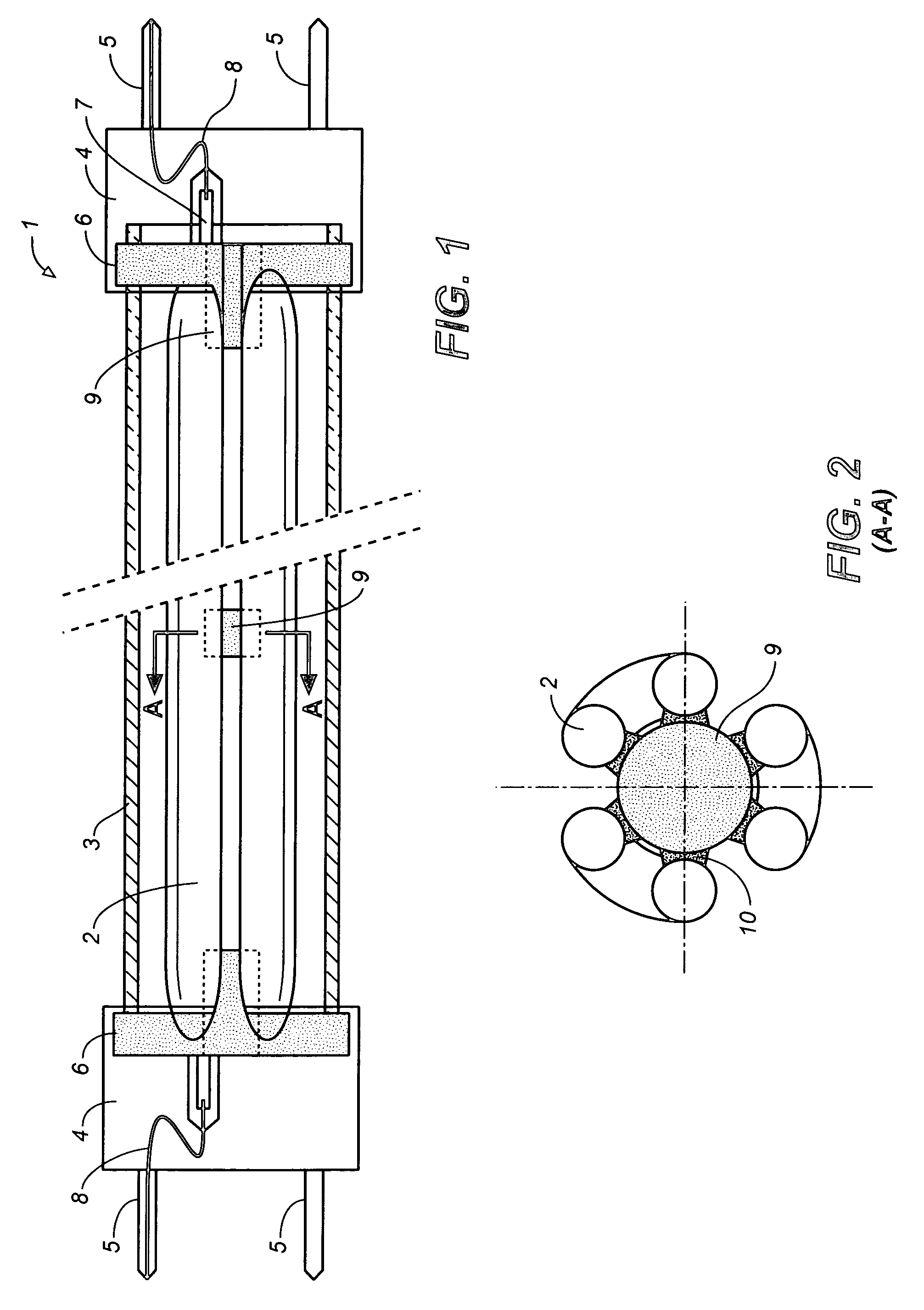High Power Cold Cathode Tubular Fluorescent Lamp
a fluorescent lamp and tubular technology, applied in the field of cold cathode fluorescent lamps, can solve the problems of difficult implementation of dimming hot cathode fluorescent lamps, short operating life, short on/off switching lifetime, etc., and achieve the effect of increasing the length
- Summary
- Abstract
- Description
- Claims
- Application Information
AI Technical Summary
Benefits of technology
Problems solved by technology
Method used
Image
Examples
Embodiment Construction
[0038] The present invention provides a high power, high efficiency and high output luminous flux CCFL tubular FL, which can replace the existing high power tubular hot cathode FL. In one embodiment, it comprises at least one “U” shape, multi-“U” shape CCFL or at least one “(n+½)U” shape CCFL tube. The case of a “(n+½)U” shape CCFL tube, where n=1 is illustrated in FIG. 20. Thus, if one side of the U-shape has a length of two feet, then the total length of the U-shaped CCFL tube is 4 feet. In order to further increase its length, one end of the U-shaped CCFL tube may be further extended but bent in a direction to form a serpentine shape illustrated in FIG. 20, which comprises a U-shape plus one half of a U-shape. Thus, if a two feet long CCFL emits light at 6 watts, then a U-shaped CCFL tube whose two prongs are two feet long each will emit light at 12 watts. By adopting the shape of the CCFL in FIG. 20, the length of the CCFL is increased by another two feet, so that the CCFL will ...
PUM
 Login to View More
Login to View More Abstract
Description
Claims
Application Information
 Login to View More
Login to View More - R&D
- Intellectual Property
- Life Sciences
- Materials
- Tech Scout
- Unparalleled Data Quality
- Higher Quality Content
- 60% Fewer Hallucinations
Browse by: Latest US Patents, China's latest patents, Technical Efficacy Thesaurus, Application Domain, Technology Topic, Popular Technical Reports.
© 2025 PatSnap. All rights reserved.Legal|Privacy policy|Modern Slavery Act Transparency Statement|Sitemap|About US| Contact US: help@patsnap.com



